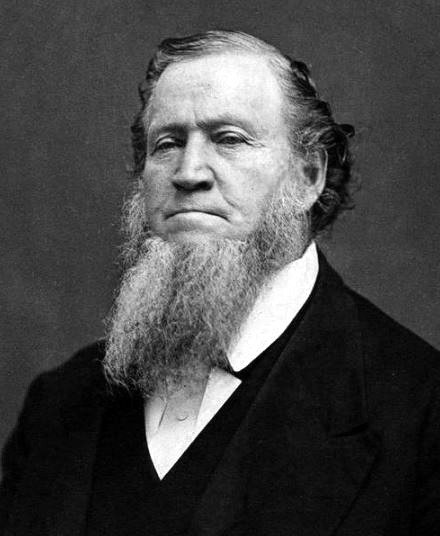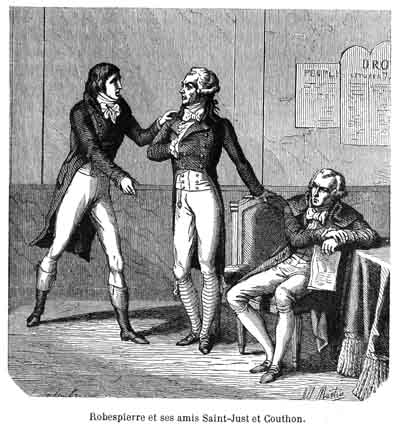|
Comité National De Secours Et D'Alimentation
The ' (CNSA, "National Relief and Food Committee"; ) was a relief organization created in 1914 to distribute humanitarian aid to civilians in German-occupied Belgium during World War I. It was directed by the Belgian financier Émile Francqui. The CNSA acted as the network by which the aid brought in by the international Commission for Relief in Belgium (CRB) could be distributed within Belgium itself. Background Before the outbreak of World War I, Belgium relied on supplies of imports for almost three-quarters of all food consumed. With the German invasion in August 1914, the importation ceased and, as the economic crisis created by the invasion escalated, the distribution of the food that was available began to break down. In particular, the British Royal Navy began a four-year " Blockade of Europe" which, although aimed at Germany, also cut food supplies from neutral countries to German-occupied Belgium. Foundation and operation of the CNSA The Committee was established ... [...More Info...] [...Related Items...] OR: [Wikipedia] [Google] [Baidu] |
Charles De Broqueville
Count, Comte Charles de Broqueville (; 4 December 1860 – 5 September 1940) was the prime minister of Belgium from 1911 to 1918 and again from 1932 to 1934, serving during the majority of World War I. Before 1914 Charles de Broqueville was born into an old noble family with its roots in Gascony, French Gascony. He was the son of Count Stanislas de Broqueville (1830–1919) and Claire de Briey (1832–1876). He received a private education from Catholic priest Charles Simon (priest), Charles Simon, from which he also learned Dutch. He married Berthe d'Huart (1864–1937), a granddaughter of Catholic statesman Jules Malou, through whom he gained further connections to politics. First elected to the Chamber of Representatives (Belgium), Chamber of Representatives in 1892 Belgian general election, the 1892 election, he represented the arrondissement of Turnhout until June 1919. He was seen as part of ''de jonge rechterzijde'' (the young right-wing), and was politically a midway b ... [...More Info...] [...Related Items...] OR: [Wikipedia] [Google] [Baidu] |
Charities Based In Belgium
A charitable organization or charity is an organization whose primary objectives are philanthropy and social well-being (e.g. educational, religious or other activities serving the public interest or common good). The legal definition of a charitable organization (and of charity) varies between countries and in some instances regions of the country. The regulation, the tax treatment, and the way in which charity law affects charitable organizations also vary. Charitable organizations may not use any of their funds to profit individual persons or entities. However, some charitable organizations have come under scrutiny for spending a disproportionate amount of their income to pay the salaries of their leadership. Financial figures (e.g. tax refunds, revenue from fundraising, revenue from the sale of goods and services or revenue from investment, and funds held in reserve) are indicators to assess the financial sustainability of a charity, especially to charity evaluators. This ... [...More Info...] [...Related Items...] OR: [Wikipedia] [Google] [Baidu] |
1914 Establishments In Belgium
This year saw the beginning of what became known as the First World War, after Archduke Franz Ferdinand of Austria, heir to the Austrian throne was Assassination of Archduke Franz Ferdinand, assassinated by Serbian nationalist Gavrilo Princip. It also saw the first airline to provide scheduled regular commercial passenger services with heavier-than-air aircraft, with the St. Petersburg–Tampa Airboat Line. Events January * January 1 – The St. Petersburg–Tampa Airboat Line in the United States starts services between St. Petersburg, Florida, St. Petersburg and Tampa, Florida, becoming the first airline to provide scheduled regular commercial passenger services with heavier-than-air aircraft, with Tony Jannus (the first federally-licensed pilot) conveying passengers in a Benoist XIV flying boat. Abram C. Pheil, mayor of St. Petersburg, is the first airline passenger, and over 3,000 people witness the first departure. * January 11 **The Sakurajima volcano in Japan ... [...More Info...] [...Related Items...] OR: [Wikipedia] [Google] [Baidu] |
Hunger Relief Organizations
In politics, humanitarian aid, and the social sciences, hunger is defined as a condition in which a person does not have the physical or financial capability to eat sufficient food to meet basic Human nutrition, nutritional needs for a sustained period. In the field of hunger relief, the term ''hunger'' is used in a sense that goes beyond the common desire for food that all humans experience, also known as an ''appetite''. The most extreme form of hunger, when malnutrition is widespread, and when people have started dying of starvation through lack of access to sufficient, nutritious food, leads to a declaration of famine. Throughout history, portions of the world's population have often suffered sustained periods of hunger. In many cases, hunger resulted from food supply disruptions caused by war, Pandemic, plagues, or adverse weather. In the decades following World War II, technological progress and enhanced political cooperation suggested it might be possible to substantiall ... [...More Info...] [...Related Items...] OR: [Wikipedia] [Google] [Baidu] |
Brigham Young University
Brigham Young University (BYU) is a Private education, private research university in Provo, Utah, United States. It was founded in 1875 by religious leader Brigham Young and is the flagship university of the Church Educational System sponsored by the Church of Jesus Christ of Latter-day Saints (LDS Church). BYU offers a variety of academic programs including those in the liberal arts, engineering, agriculture, management, physical and mathematical sciences, nursing, and law. Its undergraduate and graduate programs are organized into 11 colleges and schools at its main Provo campus, with some colleges and divisions defining their own admission standards. The university also administers four satellite campuses, one in BYU Jerusalem Center, Jerusalem, BYU Salt Lake Center, Salt Lake City, BYU Barlow Center, Washington, D.C., and BYU London Study Abroad Centre, London, while its parent organization the Church Educational System (CES) sponsors sister schools in Brigham Young Unive ... [...More Info...] [...Related Items...] OR: [Wikipedia] [Google] [Baidu] |
Michel Levie
Michel Édouard Levie (Binche, 4 October 1851 – Saint-Josse-ten-Noode, 6 March 1939) was a Belgian politician and member of the Catholic Party (Belgium), Catholic Party. He was a doctor of law, and also practiced as a lawyer. Levie was a member of the Chamber of Representatives (Belgium), Chamber of Representatives from 1900 until 1921; Minister of Finance (Belgium), Minister of Finance between 1911 and 1914. He was made Minister of State (Belgium), Minister of State on 21 November 1918. A square (''Square Levie-Levieplein'') in Schaerbeek, Brussels is named in his honour. References External links Michel LevieiODIS - Online Database for Intermediary Structures {{DEFAULTSORT:Levie, Michel 1851 births 1939 deaths Catholic Party (Belgium) politicians 19th-century Belgian lawyers People from Binche Ministers of finance of Belgium Ministers of state of Belgium Catholic University of Leuven (1834–1968) alumni ... [...More Info...] [...Related Items...] OR: [Wikipedia] [Google] [Baidu] |
Non-violent Resistance
Nonviolent resistance, or nonviolent action, sometimes called civil resistance, is the practice of achieving goals such as social change through symbolic protests, civil disobedience, economic or political noncooperation, satyagraha, constructive program, or other methods, while refraining from violence and the threat of violence. This type of action highlights the desires of an individual or group that feels that something needs to change to improve the current condition of the resisting person or group. Mahatma Gandhi is the most popular figure related to this type of protest; United Nations celebrates Gandhi's birthday, October 2, as the International Day of Non-Violence. Other prominent advocates include Abdul Ghaffar Khan, Henry David Thoreau, Etienne de la Boétie, Charles Stewart Parnell, Te Whiti o Rongomai, Tohu Kākahi, Leo Tolstoy, Alice Paul, Martin Luther King Jr., Daniel Berrigan, Philip Berrigan, James Bevel, Václav Havel, Andrei Sakharov, Lech Wałęsa, Gene ... [...More Info...] [...Related Items...] OR: [Wikipedia] [Google] [Baidu] |
Triumvirate Committee For The Relief Of Belgium
A triumvirate () or a triarchy is a political institution ruled or dominated by three individuals, known as triumvirs (). The arrangement can be formal or informal. Though the three leaders in a triumvirate are notionally equal, the actual distribution of power may vary. The term can also be used to describe a state with three different military leaders who all claim to be the sole leader. Informally, the term "triumvirate" may be used for any association of three. Under the influence of the Soviet Union, the term troika (Russian: for "group of three") may be used for "triumvirate". Pre-modern triumvirates Biblical In the Bible, triumvirates occurred at some notable events in both the Hebrew Bible (Old Testament) and New Testament. In the Book of Exodus, Moses, his brother Aaron and their nephew or brother-in-law, Hur (Bible), Hur, acted this way during the Battle of Refidim against the Amalekites. Later in Mishpatim, Exodus 24, when Moses was away on Mount Sinai, Aaron and H ... [...More Info...] [...Related Items...] OR: [Wikipedia] [Google] [Baidu] |
Belgian Franc
The Belgian franc was the currency of the Kingdom of Belgium from 1832 until 2002 when the euro was introduced. It was subdivided into 100 subunits, each known as a in Dutch, or in French and German. History The ''gulden'' (guilder) of 20 ''stuivers'' was the currency of present-day Belgium from the 15th to 19th centuries until its replacement in 1832 by the Belgian franc. Its value differed from the Dutch guilder, gulden of the Dutch Republic during the latter's separation from Belgium from 1581 to 1816. Standard coins issued in Belgium include: * From 1618: the :nl:Patagon, ''patagon'' or ''Albertusthaler'' of 24.55 g fine silver, worth 2.4 gulden or 48 stuiver (or 10.23 g fine silver per gulden) * From 1754: the ''kronenthaler'' of 25.71 g fine silver, worth 3.15 gulden ''currency'' or 2.7 ''gulden of exchange'' (9.52 g silver per exchange gulden). The French Écu#Silver écu of 1726, silver écu of 26.67 g silver was also accepted for 2.8 exchange gulden. * From 1816 to 1832 ... [...More Info...] [...Related Items...] OR: [Wikipedia] [Google] [Baidu] |
German Occupation Of North-east France During World War I
The German occupation of north-east France refers to the period in which French territory, mostly along the border with Belgium and Luxembourg, was under military occupation by the German Empire during World War I. This entailed various impositions on the population, including malnutrition, forced labor, and requisitions of property, services, and goods. Territory occupied The territory occupied by Germany at the end of 1914 included 10 départements in part or in full, includingː * 70% of the Nord department; * 25% of Pas-de-Calais; * 16% of the Somme; * 55% of the Aisne; * 12% of Marne; * 30% of Meuse; * 25% of Meurthe-et-Moselle; * 4.8% of Vosges; * 100% of Ardennes. These territories constituted 3.7% of the area and 8.2% of the population of France itself with about 2 million inhabitants. The current departments of Bas-Rhin, Haut-Rhin, and Moselle, which were part of the German Reich from 1871 until their return to France at the end of the war in November 1918, are n ... [...More Info...] [...Related Items...] OR: [Wikipedia] [Google] [Baidu] |
General Government Of Belgium
The Imperial German General Government of Belgium () was a German Army (German Empire), German Army Military occupation, occupation administration which administered one of the three separate occupation zones established in German occupation of Belgium during World War I, German-occupied Belgium during the First World War. Government and administration The General Government was set up on 26 August 1914, when Field Marshal Colmar Freiherr von der Goltz was appointed as military governor of Belgium.Thomas, N. (2003), ''The German Army in World War I, 1914-15 I'', Osprey Publishing, , p. 9 He was succeeded by General Moritz von Bissing on 27 November 1914. Soon after Bissing's appointment, the Oberste Heeresleitung, German High Command divided Belgium into three distinct administrative zones.Tucker, S. & Roberts, P. M. (2005). World War I: encyclopedia, Vol 1, ABC-CLIO, , p. 209 The largest of the zones was the General Government, which included Brussels, the capital, and most of c ... [...More Info...] [...Related Items...] OR: [Wikipedia] [Google] [Baidu] |







